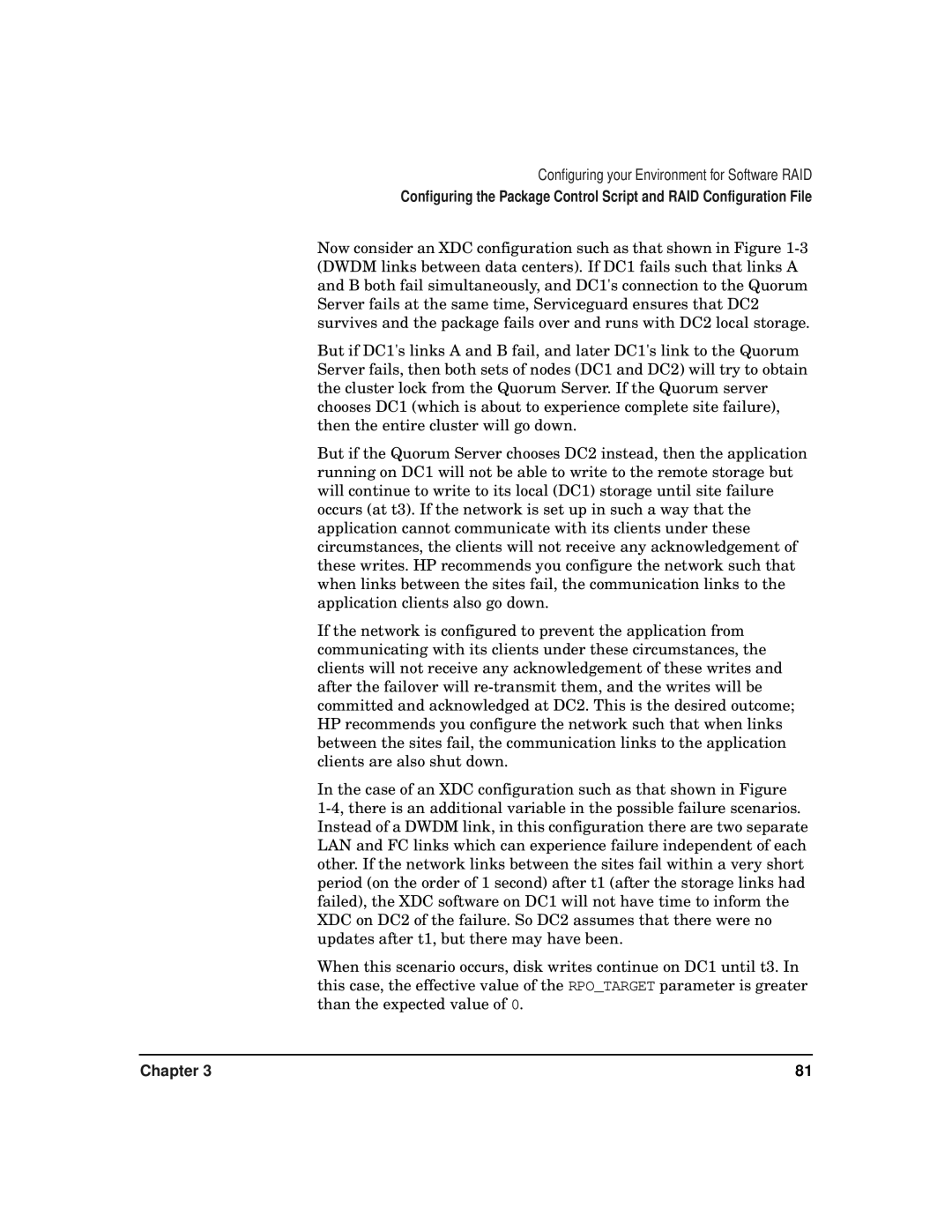Configuring your Environment for Software RAID
Configuring the Package Control Script and RAID Configuration File
Now consider an XDC configuration such as that shown in Figure
But if DC1's links A and B fail, and later DC1's link to the Quorum Server fails, then both sets of nodes (DC1 and DC2) will try to obtain the cluster lock from the Quorum Server. If the Quorum server chooses DC1 (which is about to experience complete site failure), then the entire cluster will go down.
But if the Quorum Server chooses DC2 instead, then the application running on DC1 will not be able to write to the remote storage but will continue to write to its local (DC1) storage until site failure occurs (at t3). If the network is set up in such a way that the application cannot communicate with its clients under these circumstances, the clients will not receive any acknowledgement of these writes. HP recommends you configure the network such that when links between the sites fail, the communication links to the application clients also go down.
If the network is configured to prevent the application from communicating with its clients under these circumstances, the clients will not receive any acknowledgement of these writes and after the failover will
In the case of an XDC configuration such as that shown in Figure
When this scenario occurs, disk writes continue on DC1 until t3. In this case, the effective value of the RPO_TARGET parameter is greater than the expected value of 0.
Chapter 3 | 81 |
